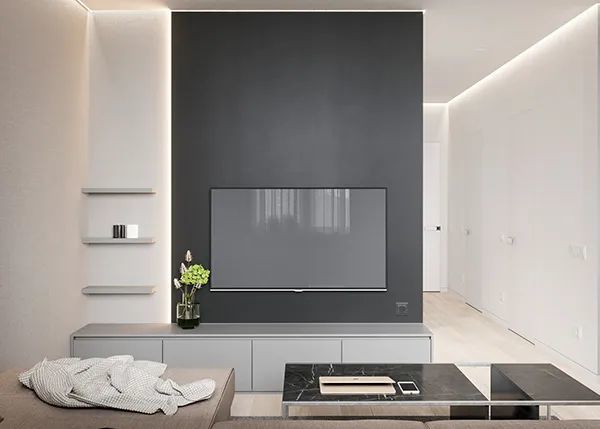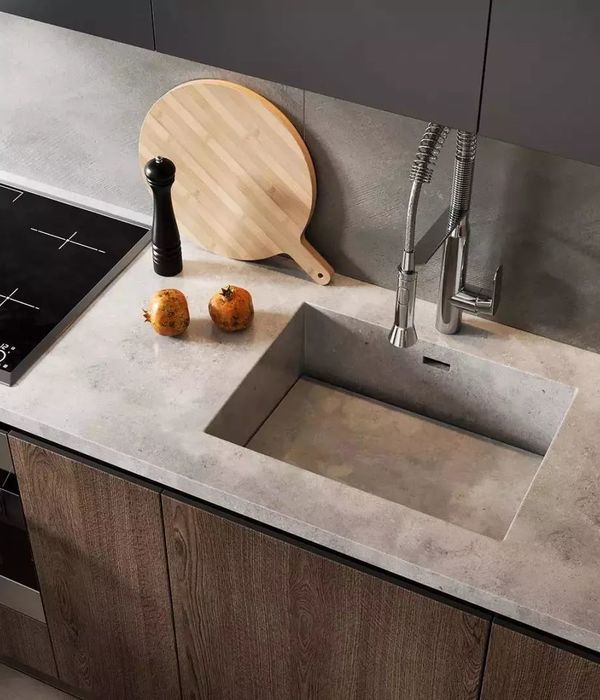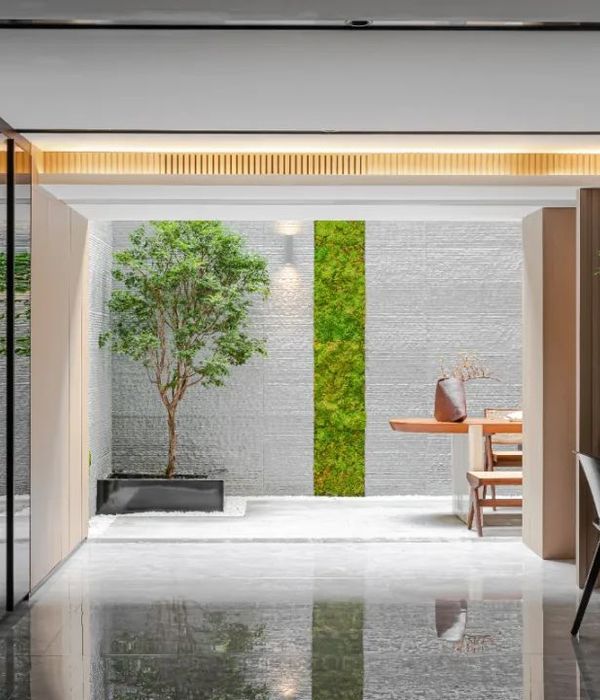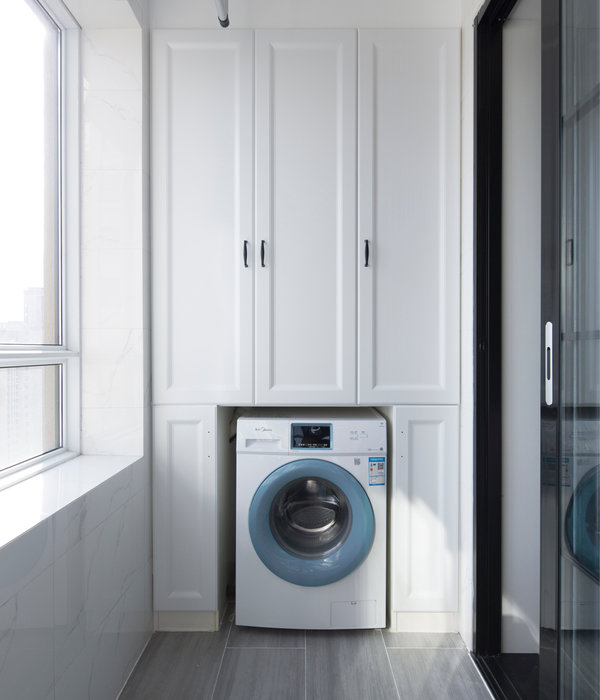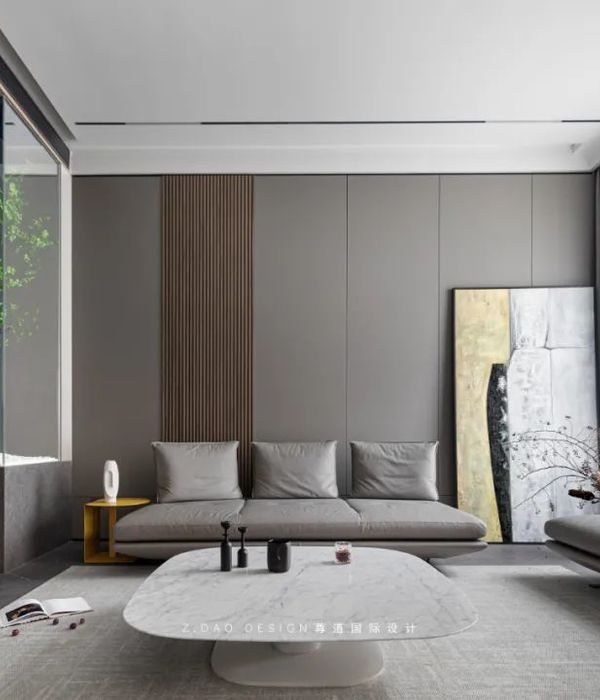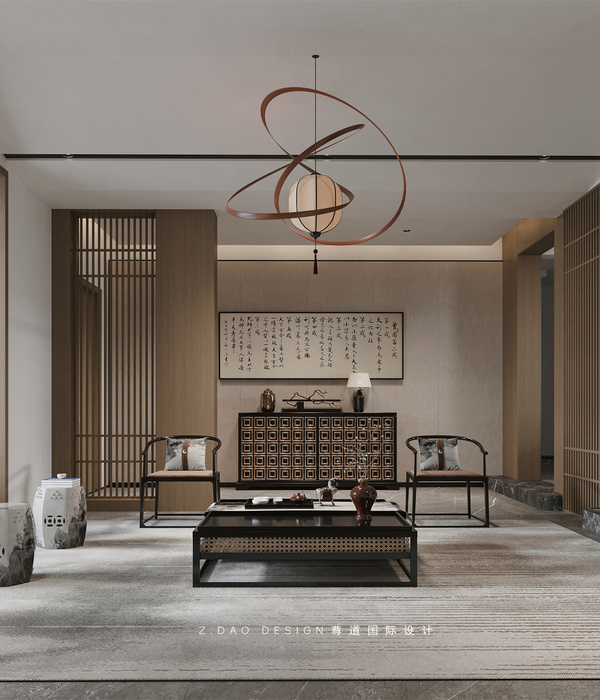- 项目名称:摩洛哥三校建筑 | 现代与传统融合的教育空间
- 项目地点:摩洛哥
- 项目年份:2011年,2014年
- 摄影:Fernando Guerra,Doublespace
当建筑是为了激发知识这股力量而创造的,那么它看起来就是一个完美的结合。2011年,建筑师Saad El Kabbaj,Driss Kettani和Mohamed Amine Siana设计了位于摩洛哥的Guelmim Technology School、Taroudant University和Laayoune Technology School 这三座大学的建筑。
When architecture is created toinspire the power of knowledge, it seems to be a perfect combination. In 2011, architects Saad El Kabbaj, Driss Kettani and Mohamed Amine Siana designed thebuildings of the Guelmim Technology School, Taroudant University and Laayoune Technology School, three universities in Morocco.
Project@Guelmim Technology School
Guelmim Technology School 是建筑师Saad El Kabbaj、Driss Kettani和Mohamed Amine Siana的一次成功的合作设计。这所线性和几何的学校是由几个建筑组成,其中包含了现代和摩洛哥传统遗产。悬挑的悬挑和遮阳的走廊在极端气候下创造了凉爽的空间和自然空气流通。建筑的布局是这样的,太阳位置的变化创造了不同的阴影对泥色的油漆,创造了一个纹理和有趣的外观。
The Technology School of Guelmimin Morocco is a successful collaborative design effort by architects Saad ElKabbaj, Driss Kettani and Mohamed Amine Siana. This linear and geometric school is composed of several buildings whichencapsulate modernity and traditional Moroccan heritage. Cantilevered overhangs and shaded hallways create cool spaces and natural air ventilation in the extremeclimate. The buildings are positioned in such a fashion that the changing position of the sun creates distinct shadows against the mud colored paint andcreates a textured and interesting appearance.
Project@Guelmim Technology School
设计理念是创造一个现代建筑,同时向其遗产和场地致敬。建筑外观象征着摩洛哥大地的一切,结构则遵循了简单和清晰的现代设计原则,注重线性和对称。这就是这个项目真正的卓越之处,在没有人能够提出明确需求的情况下,它符合了所有的要求。建筑按照l形的模式组织,位于南北轴线上。它们的体积相当巨大,在内部和外部之间形成了巨大的对比。然而,这种过度的比例被突出的方形和矩形开口所平衡。这一特征因其连续性而令人惊叹。
The idea was to create a modern building while paying tribute to its heritage and site. The cladding technique symbolises everything about the Moroccan landscape, and the structure follows asimple and clear modern approach, focusing on linearity and symmetry. That'sthe real brilliance of this project, which met all the requirements without anyone being able to pinpoint why. The building is organized in an L-shaped pattern and is located on the north-south axis. They are quite large in size,creating a huge contrast between the inside and the outside. However, thisexcessive proportion is balanced by prominent square and rectangular openings.This feature is remarkable for its continuity.
Project@Guelmim Technology School
The sun kissed the land with itsblazing rays in a desert kingdom in northern Africa called Morocco. The strong sunlight cast dramatic shadows on the sandy red walls.
Project@Taroudant University
Driss Kettani的另一个项目Taroudant大学位于摩洛哥一个有着浓厚文化特色的世俗小镇,其充满历史气息的建筑风格体现了摩洛哥南部的深厚风情。Taroudant University试图通过一座承载未来愿景的建筑来重新诠释这一遗产。为了达到这一效果,该设计依赖于一系列建筑和城市原则,通过一种概念来实现。在这种概念中,内部和外部相互渗透,尺度不同,个体与建筑融为一体。
A secular town with a strongcultural identity, Taroudant architectural style, full of history, is an expression of the deep Moroccan South. The Taroudant University is an attempt to reinterpret that heritage through a building that carries a vision for thefuture. To that effect, the design relies on a set of architectural and urbanprinciples brought to life through a conception where the inward and the outward interpenetrate, the scales vary and where the user is one with architecture.
Taroudant University的建筑布置在花园南北轴线的两侧,将场地一分为二。每一个混凝土块的墙壁都被均匀地覆盖在橘红色的渲染上,这被粗略地应用,使它显示纹理。共有11个街区,教室、实验室和演讲室主要位于四座最大的建筑内,每座建筑都围绕着小庭院。
The buildings of TaroudantUniversity are arranged either side of a north to south axis of gardens thatsplits the site into two halves. Walls of each concrete block are uniformlycovered in the orangey red render, which is applied roughly so that it shows agrain. There are eleven blocks in total and classrooms, laboratories andlecture rooms are mainly housed within the four largest buildings, which eachwrap around small courtyards.
Project@Taroudant University
Laayoune Technology School位于摩洛哥南部撒哈拉地区的主要城市。与前二个项目相比,在材料、形式和组成的选择上有明显的相似之处:赭石混凝土结构重新诠释了摩洛哥传统的原始土建筑和撒哈拉的颜色。受阿拉伯传统要塞Qasba(沙加邻里)的启发,建筑由几何形状相似的石块组成,只有几个开口,投射出强烈的阴影。光秃秃的墙壁,与他们严肃的外观,从大学教授的科学价值启发寻求节制,目的是保护,易于维护,并尽量减少成本和浪费。
Laayoune Technology School is located in southern Morocco, the main city in the Sahara region. The University network also includes Taroudant University and Guelmin TechnicalCollege. The three projects have obvious similarities in material, form andcomposition: the ochre concrete structure redefines the traditional Moroccan earthen architecture and the color of the Sahara. Inspired by the traditionalArab stronghold of Qasba (the Shaga neighborhood), the building consists of geometrically similar blocks with only a few openings that cast strong shadows.The bare walls, with their austere appearance, seek restraint inspired by thescientific value of university professors, with the aim of protecting, easy tomaintain, and minimizing costs and waste.
Project@Laayoune Technology School
该建筑的布局与Taroudant University非常相似,以轴线为基础,从西北到东南,主入口在其中一个侧臂上。各种建筑被分割成碎片状,允许最大限度的自然通风和采光,并通过一系列外部路径、广场、覆盖的广场、矿园连接起来,以恰当地增强这一城市概念。建筑的语汇是坚实的、几何的,并与外部的赭色和内部的光线形成对比。采用不同的防晒装置:遮阳板、双层皮肤、防护走道等。材料的使用最小化,强调整体的抽象和连贯性,同时满足可持续性和易于维护的需求。
The layout of the building isvery similar to Taroudant University, in that it is based on an axis runningfrom northwest to southeast, with the main entrance on one of the side arms.The various buildings are fragmented to allow for maximum natural ventilationand lighting and are connected through a series of external paths, plazas, covered plazas, and mining gardens to appropriately enhance this urban concept.The building's vocabulary is solid, geometric, and contrasts with the ochrecolor of the exterior and the light of the interior. Use different sunscreen devices: sunshades, double skin, protective walkways, etc. The use of materialsis minimized, emphasizing overall abstraction and consistency while meeting therequirements of sustainability and ease of maintenance.
Project@Laayoune Technology School
All blocks are interrupted and connected by squares and tree-lined paths, small "oases" arepartially shaded by the sun, and street decorations abound to encourage peopleto stop and sociate outdoors. The architects paid particular attention tosaharan climate and temperature issues, as well as indoor microclimates: repeated vertical openings in the walls shield the interior from glare and heat, while providing ample natural light and ventilation to the classrooms. Within these powerful and silent walls, sometimes seen as a second skin, can befound the rigor of the close connection with the earth that has characterizedMoroccan architecture for centuries.
Project@Laayoune Technology School
项目信息
项目地点:摩洛哥
Project Location:Morocco
项目年份:2011年/2014年
Project Year: 2011/2014
建筑师:Driss Kettani、Saad El Kabbaj、Mohamed Amine Siana
Architect:Driss Kettani, Saad El Kabbaj, Mohamed Amine Siana
摄影:Fernando Guerra、Doublespace
Photography:Fernando Guerra, Doublespace
Driss Kettani
Driss Kettani出生于摩洛哥菲斯,但在科特迪瓦(象牙海岸共和国)度过了童年,尽管他的家人一直希望他能回到摩洛哥,但直到他上大学的时候,他才看到了拉巴特的海滩和卡萨布兰卡层层叠的白色建筑。2003年从拉巴特的国家建筑学院毕业后,Driss Kettani花了一年时间去旅行和做自由职业。他对地点、文化和居民有着持久的兴趣,这是一个反思项目的基本出发点。这种方法与现代性和当代性的必要性携手并进,不断追求创造力和意义。2005年,他成立了自己的公司Driss Kettani Architecte,如今他已经完成了多个领域的项目,包括教育、住宅和办公,还涉足家具设计。
Driss Kettani was born in Feis,Morocco, but spent his childhood in Ivory Coast. Although his family alwayswanted him to return to Morocco, it wasn't until he went to university that hesaw the beaches of Rabat and the cascading white buildings of Casablanca. Aftergraduating from the National School of Architecture in Rabat in 2003, DrissKettani spent a year traveling and freelancing. His abiding interest in place,culture and inhabitants is the basic starting point for a reflective project.This approach goes hand in hand with the necessity of modernity andcontemporaneity in the constant pursuit of creativity and meaning. He set uphis own company, Driss Kettani Architecte, in 2005 and has now completedprojects in a number of areas, including education, housing and office, as wellas furniture design.
Driss Kettani的作品是将建筑的严谨性与对建筑敏感和诗意维度的研究相结合的方法的一部分。他致力于重塑摩洛哥的建筑文化。“我总是试图找到建筑的诗意维度,这对我来说很重要,因为建筑不必是冷冰冰和系统化的,或者像一台机器。你必须有一些诗意的东西,你必须找到它。”Driss Kettani说。
Driss Kettani's work is part ofan approach that combines architectural rigour with the study of architecturalsensitivity and poetic dimensions. He worked to reshape Morocco's architecturalculture. "I always try to find the poetic dimension of architecture, whichis important to me because architecture doesn't have to be cold and systematicor like a machine. You have to have something poetic, you have to findit." Driss Kettani said.
“我喜欢地中海, 我爱它。这是一个让我感觉特别的地方,这确实激励了我。我认为建筑师就像艺术家一样。人能感受到的东西很多,包括诱惑和情感。但我们的目标是总是:把在建筑中看到和感觉到的东西带回来。这并不意味着你必须以同样的方式重复某件事,但你必须倾听世界,倾听大自然。”Driss Kettani说。尽管阿拉伯、地中海文化在他的作品中随处可见,但Driss Kettani与海洋的关系也许是他个人的爱好。他的作品简约而又丰富多彩,微妙而又自信,反映了他的根源和他当地的人文遗产。
"I love the Mediterranean,I love it. It's a place that makes me feel special and it really inspires me. Ithink architects are like artists. People can feel many things, includingtemptation and emotion. But our goal is always to bring back what we see andfeel in the building. That doesn't mean you have to repeat things the same way,but you have to listen to the world, to nature." Driss Kettani said.Although Arab and Mediterranean cultures are ubiquitous in his work, DrissKettani's relationship with the sea may be a personal passion. His works aresimple and colorful, subtle and confident, reflecting his roots and his localheritage.
参考文献
Middle East Architect--<Moroccan architect Driss Kettani builds for the Arab Mediterranean landscape>
Dezzen/Archidaily/Archello--<Guelmim Technology School/ Taroudant University / Laayoune Technology School>
The Coolist--<Technology School of Guelmim Morocco>
{{item.text_origin}}

